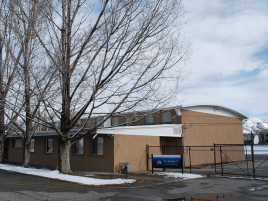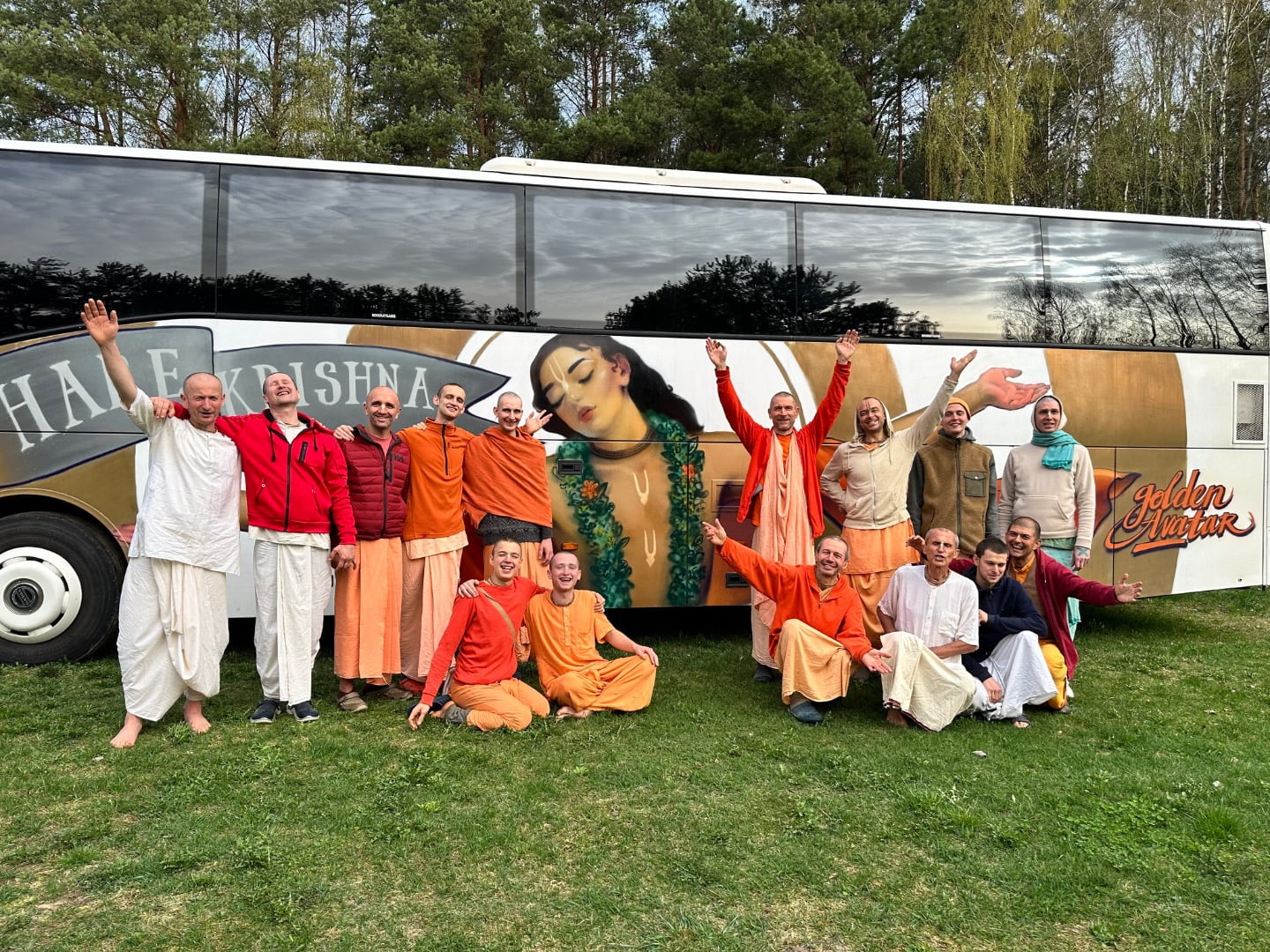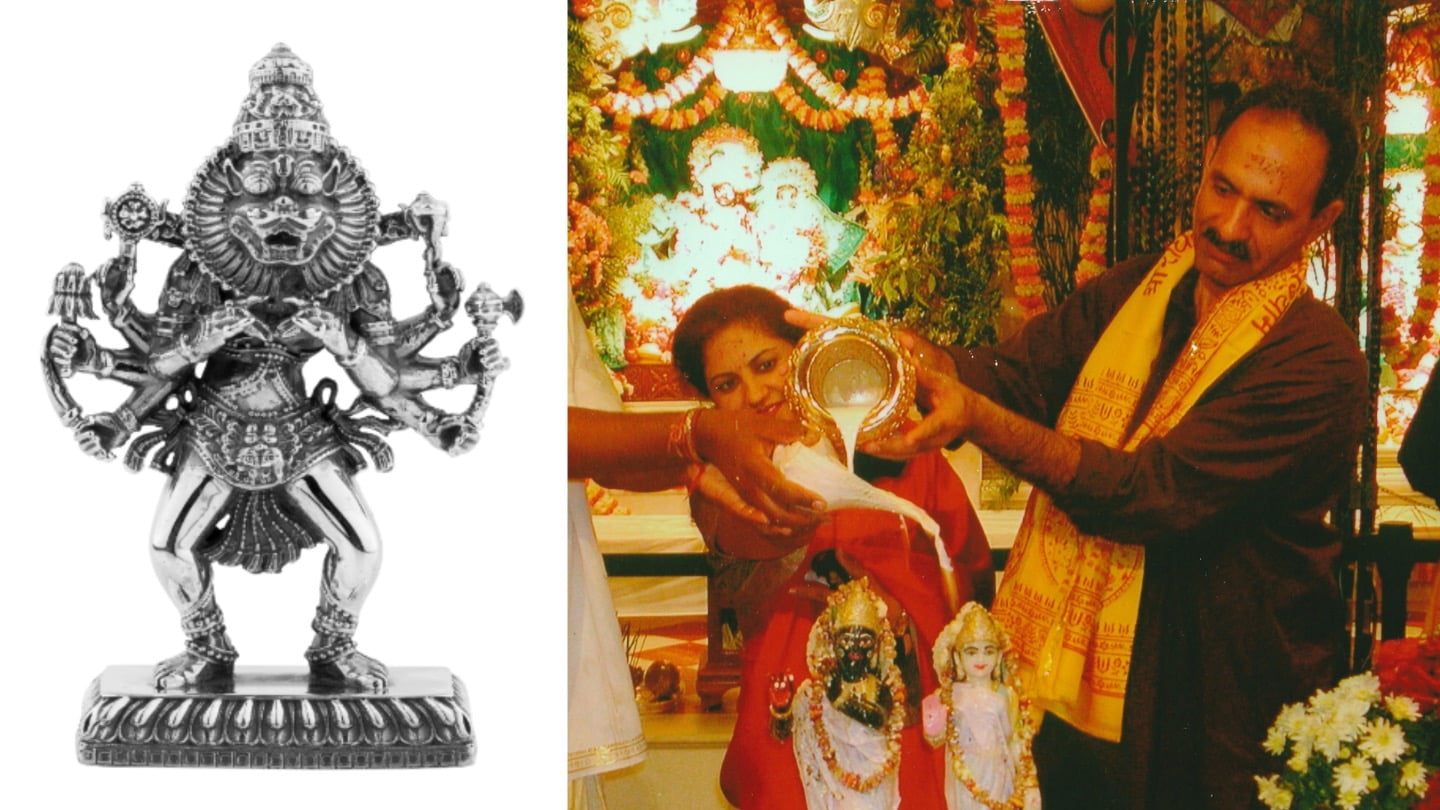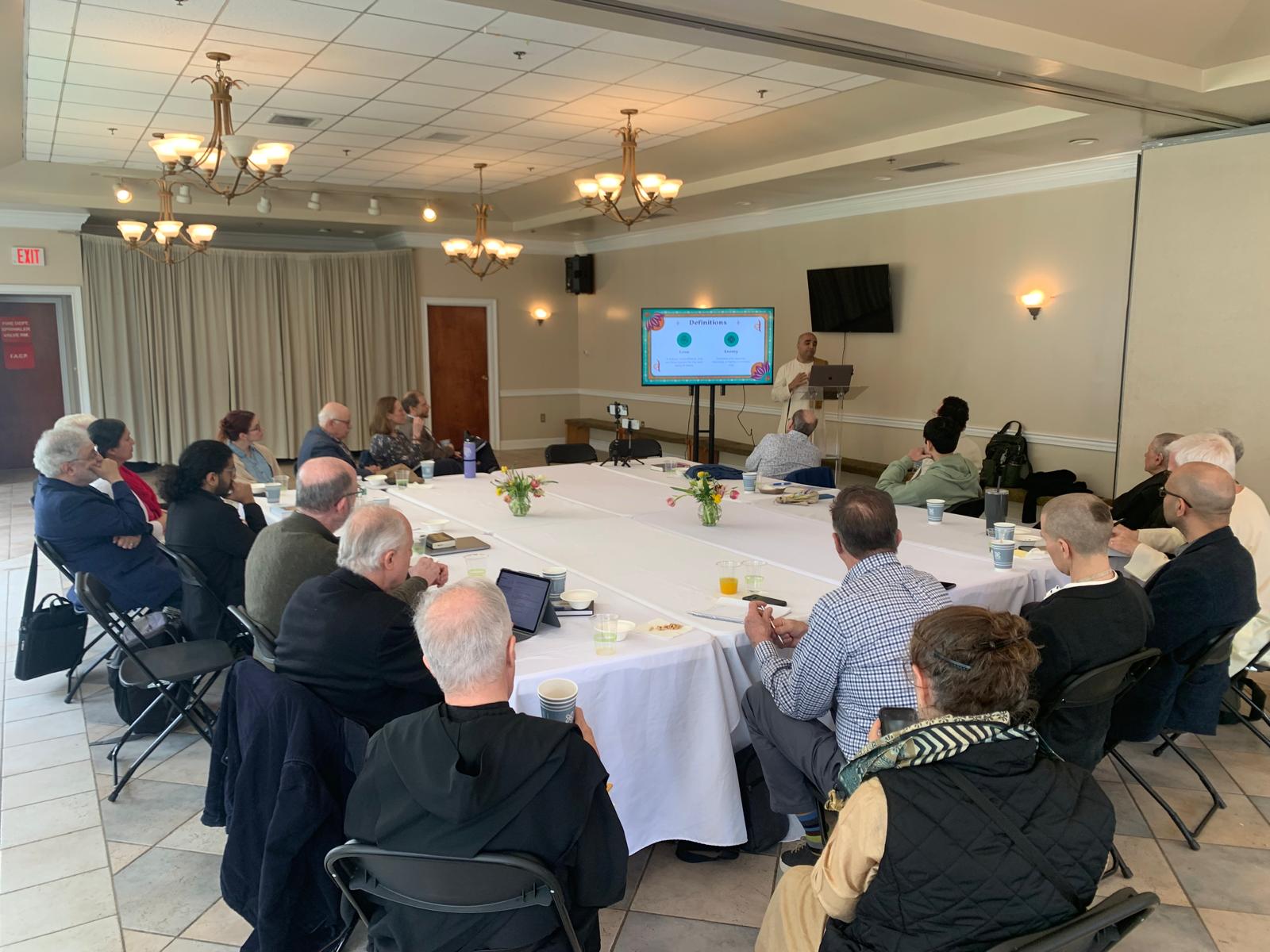ISKCON Utah Looks to Open New Center in Salt Lake City
By Madhava Smullen | Feb 20, 2011

Charu Dasa has a dream.
I know what you’re thinking—so do a lot of people. But the last time Charu had a dream, when he and his wife moved to Spanish Fork, Utah in 1987, it turned into nothing short of a phenomenon.
By 2001, a stunning temple had risen against the beautiful backdrop of the Wasatch Mountains. Standing elevated on a fifteen-acre plot, towering fifty feet over the surrounding grasslands, and featuring a main dome twenty-five feet in diameter, twelve surrounding domes, and 108 arches and columns, it was, and still is, the only traditional Rajasthani-style building of its kind in America.
And despite the almost impossible odds of a Krishna temple succeeding in the center of Mormon country, it was soon drawing thousands of western college students from the local Brigham Young University to its huge, elaborate festivals—in 2010, an unprecendent 20,000 people attended its Holi celebration. Today, it’s a centerpiece of the local community, with its Mormon neighbours welcoming it warmly and supporting it in every way they can.
Now, Charu’s dreaming about Utah’s capital, Salt Lake City. The ISKCON Spanish Fork president has his eye on a 3.74-acre property, previously used as a school by the mostly vegetarian Seventh Day Adventists.
“Despite our success, we recognized early on that we weren’t going to make any new devotees in Spanish Fork, which is why we focused on making ourselves a cultural, performing arts center and tourist destination,” Charu says. “The fact is that not many people in an area that’s ninety per cent Mormon are going to be interested in becoming full-time devotees. They already have their own religion, their own theology, their own worship and commitments.”
That’s why Charu has long hoped for a presence in Salt Lake City, where only about forty per cent of the population is already religiously committed.
“The rest don’t have a spiritual home,” he says. “There, we would be able to more deeply transform people’s lives, to fulfill needs that are more pressing.”
The prospective new property is located in the center of downtown Salt Lake City. It’s only twenty blocks from the University of Utah, which is a far more secularized institution than Spanish Fork’s Brigham Young, but has just as many students—over 30,000—who are likely to visit the temple.
The complex has a gym that holds 500 to 600 people, a free-standing building that would be ideal for a large bookstore and giftshop, many classrooms, and of course nearly four acres of land that could accommodate thousands for ISKCON Utah’s famous festivals.
But although ISKCON is under contract to purchase the complex, and is now applying for loan approval, it’s no done deal yet.
“The property is going for $1,185,000, two or three times less than what it would have gone for a couple of years ago,” says Charu. “The downside, however, is that banks are just not giving loans these days. In this case, a loan is especially hard to get, since we are a 501 C3 charity organization that doesn’t have much of a credit history—our property in Spanish Fork was all paid for up front.”
ISKCON Utah can currently afford to pay $200,000 up front, while profits from this year’s upcoming Holi Festival will bring them up to around $240,000, a standard twenty per cent downpayment. However, while this would have been perfectly acceptable two years ago, it doesn’t cement the deal in today’s difficult financial climate.
“To secure the property, we’re looking at a $300,000 to $350,000 downpayment,” Charu says. “Now, we are completely capable of servicing our debt. We’re not asking for handouts—but we would like to extend the opportunity to help us make this project happen to the greater devotional community. If someone would like to loan us the money, we would rather pay them interest than the bank.”
If the deal does go through, it will be one of the biggest ISKCON projects in the US since Srila Prabhupada passed away.
One of the classrooms of the former Seventh Day Adventist School will be converted into a small, elegant temple room with a marble floor and chandeliers, capable of comfortably housing fifty to sixty people for worship during regular morning and evening programs.
The gym, meanwhile, will be turned into a large cultural hall where bigger festivals will be held. The ‘utsav,’ or small festival deities from the altar will be brought in and placed on a stage for traditional abhishekha bathing ceremonies, where big crowds will be able to see them clearly.
The other classrooms will be used for regular educational, spiritual workshops and seminars on topics relevant to people such as love, relationships, breaking bad habits, languages, and music. For the children, Charu plans to have Sunday school, summer camps, and an ongoing “Story Hour,” telling stories from the Srimad Bhagavatam and other scriptures, with added Krishna conscious philosophy.
The 65 x 35 foot free-standing building will become an elaborate gift store, a “virtual spiritual emporium” which will provide a large percentage of the income needed to cover the property’s mortgage.
“In America, a lot of Indians patronize our temples, and that’s great,” Charu says. “But if you want a lot of traffic including westerners, there’s nothing better than a spacious, well-stocked gift store. It will get them to set foot on the property, eat a prasadam meal every so often, and get to know the devotees on a personal basis. Then they’ll attend the service, and before you know it they’re coming regularly.”
To draw the student crowd, there will also be a “Krishna Lounge” with comfortable chairs and wi-fi, where students from the University of Utah and Salt Lake
City College can hang out, do their homework, and imbibe the spiritual atmosphere. To help them out, there’ll be healthy prasadam food such as decaf coffee, herbal teas, pastries, and whole-wheat vegetarian sandwiches, as well as spiritual literature strategically placed on the coffee tables.
Charu’s mood, as it always has been at the Spanish Fork temple, is to create community, and an inclusive environment where all feel welcome.
“There’s a field in back where local student teams are welcome to play soccer or cricket for a donation, and we will welcome other spiritual, yoga and mediation groups who show interest in renting our classrooms or land for their classes or events,” he says. “We want a family atmosphere that attracts people to come on the property, eat prasadam, and make friends with the devotees.”
If all goes well, and ISKCON Utah is able to get the loan they need, they’ll be official owners of the property on May 31st. Although the school will remain there until the end of the school year on June 30th, they will clear out the free-standing building at the end of May so that devotees can begin fitting their gift store with racks and shelving, and stocking it. By July 1st, the school will have vacated completely, the gift store will be open, and devotees will begin working on the altar and converting the various rooms.
October will see the grand opening celebration, attended by the devotee community, senior ISKCON leaders, kirtan groups, and the general public, which Charu expects to turn out in their thousands.
The new center is not expected to in any way disrupt the activity of ISKCON Spanish Fork. Devotees living in Salt Lake City, whose involvement has been limited until now because of the distance, will volunteer as staffers, while others from neighboring cities will visit to give classes and workshops.
The new center will start with Bhagavad-gita classes and an arati ceremony every evening, and two full services a week, at 7pm on Saturday, and 10am on Sunday. “I will attend both, then drive back to attend our 5pm service at Spanish Fork,” says Charu, who intends to remain just as much a part of the Spanish Fork temple as ever.
The long term vision for the Salt Lake City property is quite thrilling.
“Once we have the mortgage in hand, the next step will definitely be to build a georgeous temple in downtown Salt Lake City,” Charu says. “There’s four acres of land to build it on. And we still have all the molds, arches and other components—worth hundreds of thousands of dollars—with which we built the Spanish Fork temple, so we have a big head start in time and money. What’s more, although it will be a Rajasthani-style temple built with the same molds, it will have a completely different look and design to the Spanish Fork temple.”
Charu’s dream is so crystal-clear and well-realized, and such a reality to him already, that it also becomes a reality to anyone he speaks about it to.
“You can’t put this on a loan application,” he says. “But if you could, here’s what I’d tell the banks: If, by Krishna’s grace, we have been able to do what we’ve
been able to do in Spanish Fork, an area that is ninety per cent Mormon and was previously thought the least likely place for a Krishna temple to succeed—when we get to Salt Lake City, hold on to your hats!”
If you would like to help the Salt Lake City temple become a reality, by either donating outright, becoming a gurantor for part of the loan amount ($100,000 and up), giving an interest free loan, or loaning the temple funds at lower than the bank rate, please call Charu at (801)787-1510. To donate through paypal (any amount, large or small, is appreciated), please click the paypal icon on the homepage at http://www.utahkrishnas.org.














